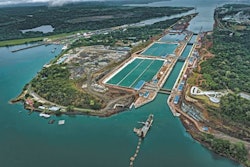
Many American farmers pride themselves on being self-reliant. But this year, they're getting more federal money from a Depression-era food purchasing program that's designed to combat a supply glut and low prices.
Uncle Sam has already spent around $313 million in the year ending in September on Section 32 of the Agriculture Act of 1935, which allows the secretary of agriculture to purchase domestically produced food to balance out supply and demand. That surpasses last year's total of $306.3 million. It's also the largest amount spent on the program since the throes of the recession in fiscal 2009, when $319.5 million was shelled out.
"It's not typical, but we're having some issues in a lot of the commodity markets," said Mykel Taylor, a professor in farm management at Kansas State University. "Everybody is cycling down from big record incomes and now they're sitting on big supplies."
Yet not everyone is convinced that the program, funded at taxpayer's expense, provides a lasting boost on spot and wholesale prices—or on farmers' wallets.
To read the full story, please click here.


















